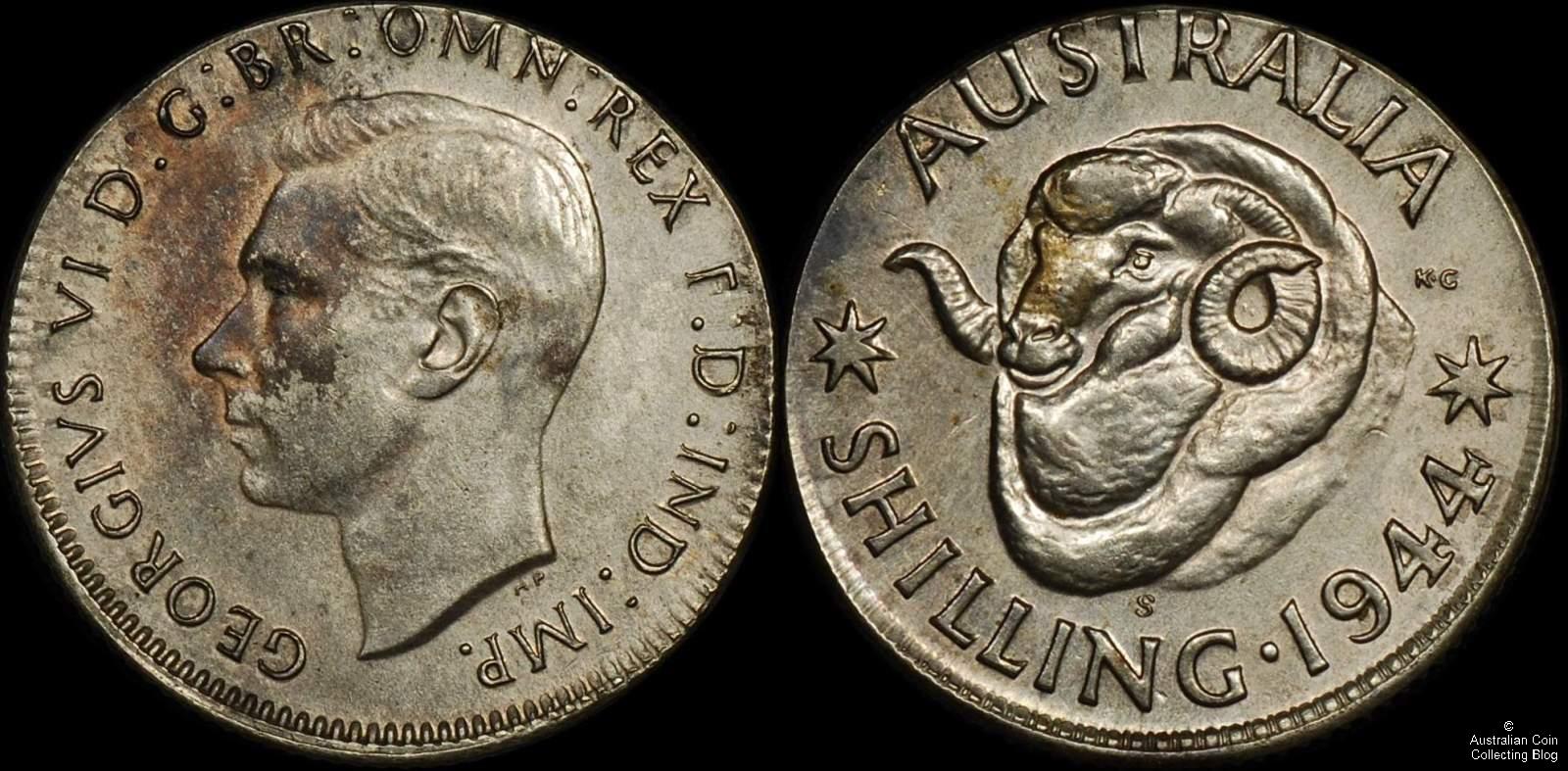This 1944s Australian shilling was struck in San Francisco USA (note the S mintmark) on an underweight planchet of 4.95g. Some Australian silver during WWII was struck in both San Francisco and Denver in the USA as demand for coinage outran the capabilities of our Mint’s at that time. Because of this shillings undersized planchet it hasn’t completely pressed out in the collar die to receive it’s edge milling and denticles around the top half of the coin. An interesting coin with a different patina to it’s other shilling ram friends.
Represented on eBay as being struck on an underweight planchet the above coin sold for a BIN of $300. An underweight planchet yes, but a more interesting answer fits. This coin was struck in the USA where a war nickel at that time was made from 5 grams of 35% silver, 56% copper, 9% manganese. The Australian 1944s shilling should weigh 5.65 grams made from 92.5% silver and 7.5% copper. It’s most likely this coin was struck on a foreign planchet, that of a USA 5c! The weight fits and the unusual patina is derived from the lower silver and higher copper percentage. What a rare occurance for a misplaced USA nickel blank to find it’s way into the hopper of blanks to be struck as Australian Shillings, for it to be struck by the press and pass quality checking to be shipped back to Australia as circulating currency.
The way to prove this theory beyond doubt is to send this coin off to PCGS or NGS for non-invasive compositional testing and it to be slabbed as an Australian shilling struck on a USA war nickel planchet – spectacular error coin.
A similar coin (in it’s raw state) dated 1943s and accurately identified sold for an $1,100 knock down bid (+ buyers premium) at IAG auction 73 (lot 487 March 2011). Another 1943s sold for $1320 (+ buyers premium) at IAG auction 71 (lot 460 March 2010).
Other interesting foreign planchet error coins are an Australian $2 coin struck on a Euro 10c planchet or the Australian Mob of Roos One Dollar Struck on Venezuelan Bi-metal Planchet.


